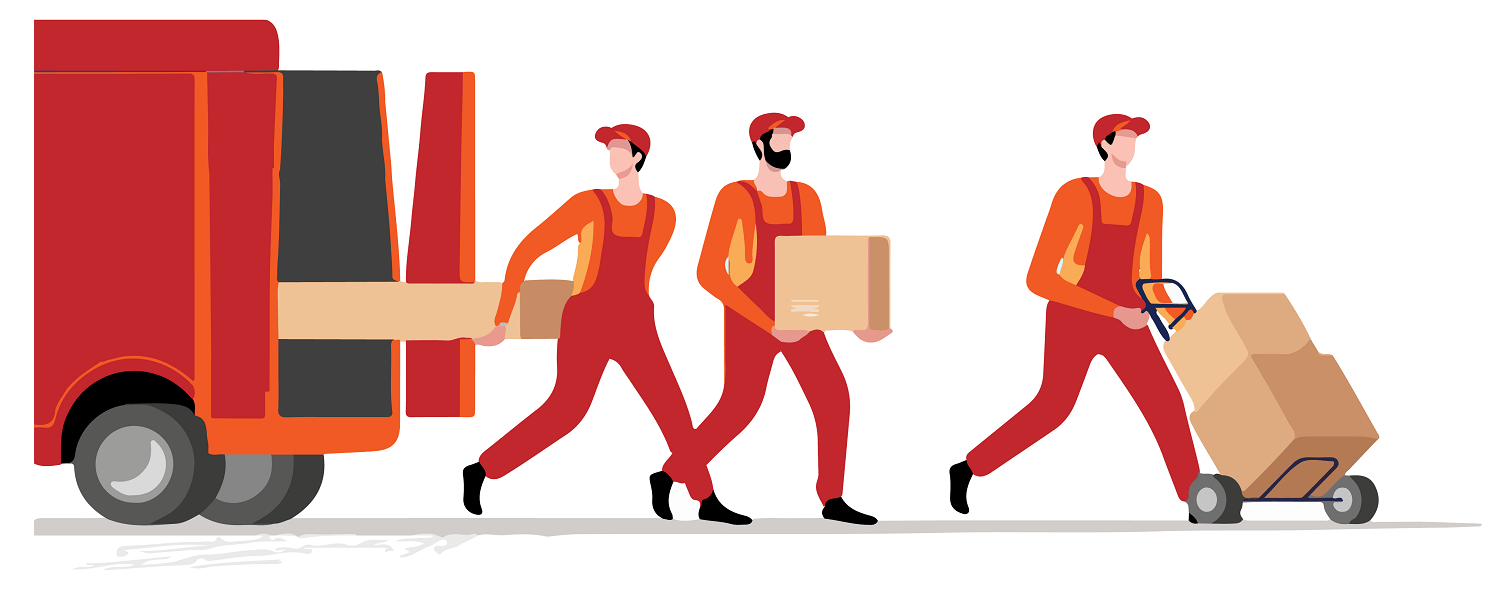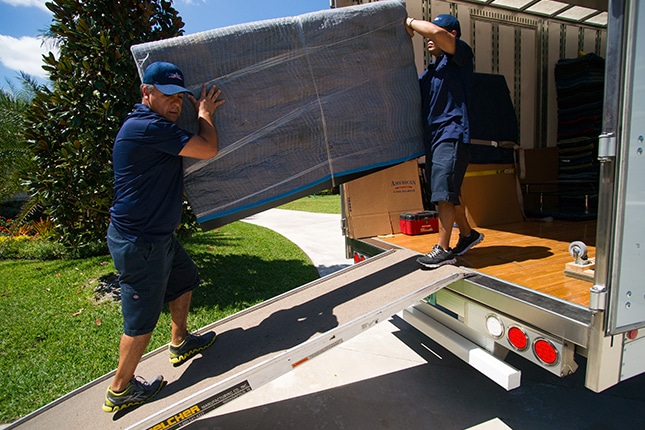Apartment Movers: Specialist Moving Specialists Can Help Make Your Shift Smooth And Stress-Free
History and Evolution of Moving Providers
The Dawn of Moving: From Muscle to Devices
Image this: a handful of strong males transporting heavy trunks on wood carts, navigating cobblestone streets with sweat and decision. Before the modern moving industry took shape, moving was a ruthless, labor-intensive task. In ancient times, relocation often meant counting on large physical strength and rudimentary tools. The absence of specialized services meant households and merchants needed to coordinate every detail themselves, often running the risk of damage or loss.
Isn't it fascinating how need fuels innovation? As cities expanded and commerce grew, the requirement for effective, dependable moving services became glaringly apparent. Get in the age of horse-drawn wagons and later, motorized vehicles, which revolutionized how valuables took a trip from one place to another.
Industrial Transformation: The Catalyst for Change
The 19th century's industrial boom reshaped lots of facets of life, including how people moved. Unexpectedly, metropolitan migration surged, and with it, the demand for expert movers escalated. No longer was moving a simple task; it developed into a specific service offering:
- Packaging proficiency to secure fragile products
- Organized packing techniques making the most of area
- Transportation options customized to different distances
This period marked the birth of business devoted exclusively to moving, laying the groundwork for today's complex logistics and customer-centric techniques.
Technological Developments and Their Impact
Can you think of moving without contemporary equipment? The development of hydraulic lifts, forklifts, and pallet jacks transformed the market over night. All of a sudden, movers could deal with bulky furniture and heavy home appliances with ease, minimizing injuries and improving effectiveness.
Moreover, the integration of digital innovation sparked a brand-new wave of innovation. GPS tracking, online reservation platforms, and real-time stock management have become staples in the moving services landscape. These tools not just improve transparency but likewise empower consumers to stay connected and informed throughout their moving journey.
Secret Turning Points in Moving Provider Evolution
| Era | Development | Significance |
|---|---|---|
| Ancient Times | Manual work and fundamental carts | Structure of moving as a requirement |
| 19th Century | Horse-drawn wagons and packaging services | Birth of expert moving business |
| 20th Century | Motorized trucks and mechanized equipment | Increased effectiveness and scale |
| 21st Century | Digital combination and GPS innovation | Enhanced consumer experience and logistics |
Reflections on the Journey
Showing on the evolution of movers, one might question: how did a basic act of carrying valuables become a sophisticated industry? It's a tale of durability, adaptation, and continuous enhancement. From the sweat-soaked streets of old to the precision-driven operations these days, the history of moving services is as dynamic as individuals who depend on them.
Next time you load a box or hire a mover, consider the layers of history ingrained in every step. The journey of movers encapsulates human resourcefulness, transforming what was once a difficult task into a smooth experience.
Checking out the Spectrum of Moving Solutions
When the time comes to shift your life from one address to another, the variety of moving services readily available can seem like navigating a maze. Do you require a simple loading and dumping team, or does your move demand the skill of full packing and unpacking? Comprehending the subtleties can save hours of frustration and unanticipated expenses.
Typical Kinds Of Moving Providers
- Local Relocations: Developed for movings within a city or city, these services usually run on a hourly basis, best for short distances.
- Long-Distance Moves: Covering moves beyond 100 miles, these require more coordination, from logistical planning to protect transport, frequently priced by weight and range.
- Full-Service Relocations: Movers handle everything-- packing, filling, carrying, dumping, and sometimes even unloading. Suitable for those pushed for time or energy.
- Self-Service Moves: You load and pack your personal belongings, while the business deals with transport and dumping. A happy medium offering cost savings and some benefit.
- Specialty Relocations: For vulnerable, bulky, or important products like pianos, antiques, or artwork, requiring customized devices and know-how.
Specialist Tips to Navigate Your Moving Service Choices
- Focus on Flexibility: Select a service that adjusts to unanticipated hold-ups or last-minute changes-- rigid schedules can turn a smooth move into a logistical headache.
- Check Insurance Options: Not all moving business provide the very same level of protection. Understanding your coverage can prevent distress if something goes awry.
- Request Comprehensive Stocks: A precise item list prevents disputes and makes sure accountability, specifically when dealing with long-distance or specialized relocations.
- Consider Season: Seasonal demand can affect availability and pricing. Early scheduling during off-peak seasons may approve much better service and flexibility.
- Ask About Packaging Products: Top quality boxes, bubble wrap, and cushioning can be the distinction in between a scratched heirloom and a pristine arrival.
Table: Service Features Compared
| Service Type | Who Loads? | Transportation Mode | Common Pricing Model | Suitable For |
|---|---|---|---|---|
| Local Move | Client or Movers | Truck | Per hour | Short ranges, small loads |
| Long-Distance Move | Movers | Truck or Container | Weight & & Range | Cross-state or regional relocation |
| Full-Service Move | Movers | Truck | Flat or Weight-Based | Time-sensitive, high-stress moves |
| Self-Service Move | Customer | Truck or Container | Flat or Per hour | Cost-conscious, hands-on movers |
| Specialized Move | Movers with proficiency | Specialized Devices | Custom-made Quote | Fragile or important items |
The Unseen Complexity Behind Each Choice
Have you ever wondered why moving appears simple and easy on television but becomes a cascade of last-minute decisions in genuine life? The fact lies in the intricacies of each service type. For circumstances, full-service relocations might seem like a high-end, but the knowledge associated with packing fragile heirlooms or disassembling large furnishings is a craft developed over years. On the other hand, choosing a self-service move might save money, however it demands a keen understanding of how to load effectively-- did you understand that stacking strangely shaped boxes incorrectly can cause internal moving during transit, wrecking delicate contents?
Choosing the best kind of moving service is not almost benefit-- it has to do with protecting your memories and investments. What's your move's story going to be?

Packaging and Moving Techniques
Ever tried to fit a travel suitcase that just won't close? That's the kind of puzzle professional movers solve daily-- but on a much bigger scale. The secret lies not in strength however in Cheap Movers Near Me tactical positioning and smart use of space. Packing isn't simply about stuffing items into boxes; it's an art form where every inch counts.
Layering for Success
Picture a painter layering colors to produce depth. Likewise, when packaging, begin with much heavier items at the bottom, then cushion with softer products like bubble wrap or towels. This avoids damage and maximizes box stability. Oddly shaped products can slip into spaces, lowering wasted area.
- Wrap vulnerable items separately with tissue or foam to prevent scratches.
- Usage clothing as padding-- it's both efficient and environmentally friendly.
- Fill empty areas with packing peanuts or crumpled paper to minimize movement.
Labeling: The Unsung Hero

What good is ideal packaging if you spend hours searching through boxes? Comprehensive labeling is a game-changer. Rather of vague tags like "Cooking area," attempt this method:
| Label | Description | Concern |
|---|---|---|
| Vulnerable - Glass wares | Manage with care, includes fragile products | High |
| Basics - Very First Night | Items required instantly after moving | Immediate |
| Books - Research Study Room | Stacked, heavy books | Medium |
Strategic Packing Tips
- Take apart large furniture and keep screws in labeled bags taped to the pieces.
- Usage uniform box sizes when possible-- stacking becomes simpler and more secure.
- Don't overpack boxes; weight limitations exist for a factor. Objective for 40-50 pounds max.
- Wrap furniture edges with moving blankets to avoid scratches throughout transit.
- Seal boxes with premium packing tape-- double layers on the bottom are vital.
Why do some movers swear by a color-coded system? Because it eliminates uncertainty on moving day. Designate each space a color and mark boxes accordingly. This small step can conserve hours when discharging and unpacking.
Packaging and moving demand precision-- like a chess video game where every relocation counts. Have you ever observed how some movers manage large products easily? They take advantage of angles and pivot points to browse tight corners without damage. It's not muscle; it's method.
Hidden Struggles Behind the Moving Van Doors
Ever viewed a group of expert movers bring a grand piano through a narrow doorway and questioned how they pull it off without a scratch? The art of moving isn't simply muscle and trucks; it's a fragile dance with unpredictability. Weather condition can flip from a sunlit blessing to a torrential threat in minutes, turning a simple drive into a logistical labyrinth.
One infamous difficulty is the labyrinthine design of some homes or houses. Staircases too tight for dollies, doorways narrower than basic boxes, or elevators that hardly fit a couch-- these physical peculiarities demand inventive solutions on the area. Movers typically resort to unconventional strategies like disassembling furnishings or employing customized cushioning to safeguard both the product and the home.
Accuracy Packaging: More Than Just Covering
It's appealing to think packing is simply stuffing boxes, but the truth is an intricate puzzle of weight circulation and fragility. Movers should prepare for how products will move during transit-- a mistake can imply shattered heirlooms or dented appliances. The secret weapon? Strategic layering and utilizing materials with specific shock-absorbing qualities.
- Bubble wrap is standard, however alternating it with foam sheets can significantly reduce effect damage.
- Heavy items go at the bottom; vulnerable ones nestle on top, cushioned by soft textiles.
- Identifying boxes not simply by contents but by dealing with guidelines ensures quicker, safer dumping.
Another less discussed strain is the mental toll. The clock ticks non-stop, and every delay ripples through tight schedules. Remaining calm amid disorderly last-minute changes requires imagination and team synergy.
Traffic Jams and Timing: The Unnoticeable Opponents
| Barrier | Specialist Method | Impact |
|---|---|---|
| Urban congestion | Path optimization apps and versatile scheduling | Minimizes delays and fuel consumption |
| Parking constraints | Pre-arranged permits or tactical parking close by | Prevents fines and time loss |
| Unpredictable weather condition | Water resistant coverings and contingency plans | Preserves the condition of goods and devices |
Do you truly know what it takes to keep a moving day on track? It's not just about strength or stamina; it has to do with foresight, versatility, and a deep understanding of every piece of the puzzle. The next time you see movers at work, keep in mind: behind that seamless operation lies a series of determined maneuvers and fast thinking that couple of ever notice.